Interview with Florin Ardelean and Francesco Masci from Calzoleria F&F
1March 15, 2014 by Ville Raivio
Ville: Your age and occupation?
Products from Pukimo Raivio
Ralph Lauren, Black Label suit, size 52EU
Francesco: I am 28 years old, and I am a shoemaker.
Florin: I am 37 years old, and I am a shoemaker.
Ville: Your educational background?
Francesco: I have a master’s degree in Law, finished as I was learning the gentle craft.
Florin: I’m a certified master shoemaker, with a diploma from the cordwainer school in ClujNapoca.
Ville: Have you any children or spouse (and how do they relate to your shoe enthusiasm)? And your parents and siblings’ reactions back when you were younger?
Francesco: I come from a family of lawyers and judges, so when I said to my mother that I wanted to become a fullfledged shoemaker she was somewhat perplexed, to say the least. My father was always supportive, remembering me that my grandfather had the same passion for artisanal crafts: despite his profession, he learned by himself clay sculpture and clockmaking (!). Now, my parents own two pairs of F&F shoes each. I have a girlfriend, and she is cordially hated by all her female friends, since she has a shoemaker boyfriend and she doesn’t like shoes so much…
Florin: My family was always very supportive: when I was a little kid I could not decide if I
wanted to be a car mechanic or a shoemaker, and my father told me that the shoemaking way was the best, since not everyone owns a car, but every man in the world needs shoes. It was so good a suggestion that my brother also became a shoemaker! My wife married me when I was starting my profession and has been always happy and supportive of my professional choice.
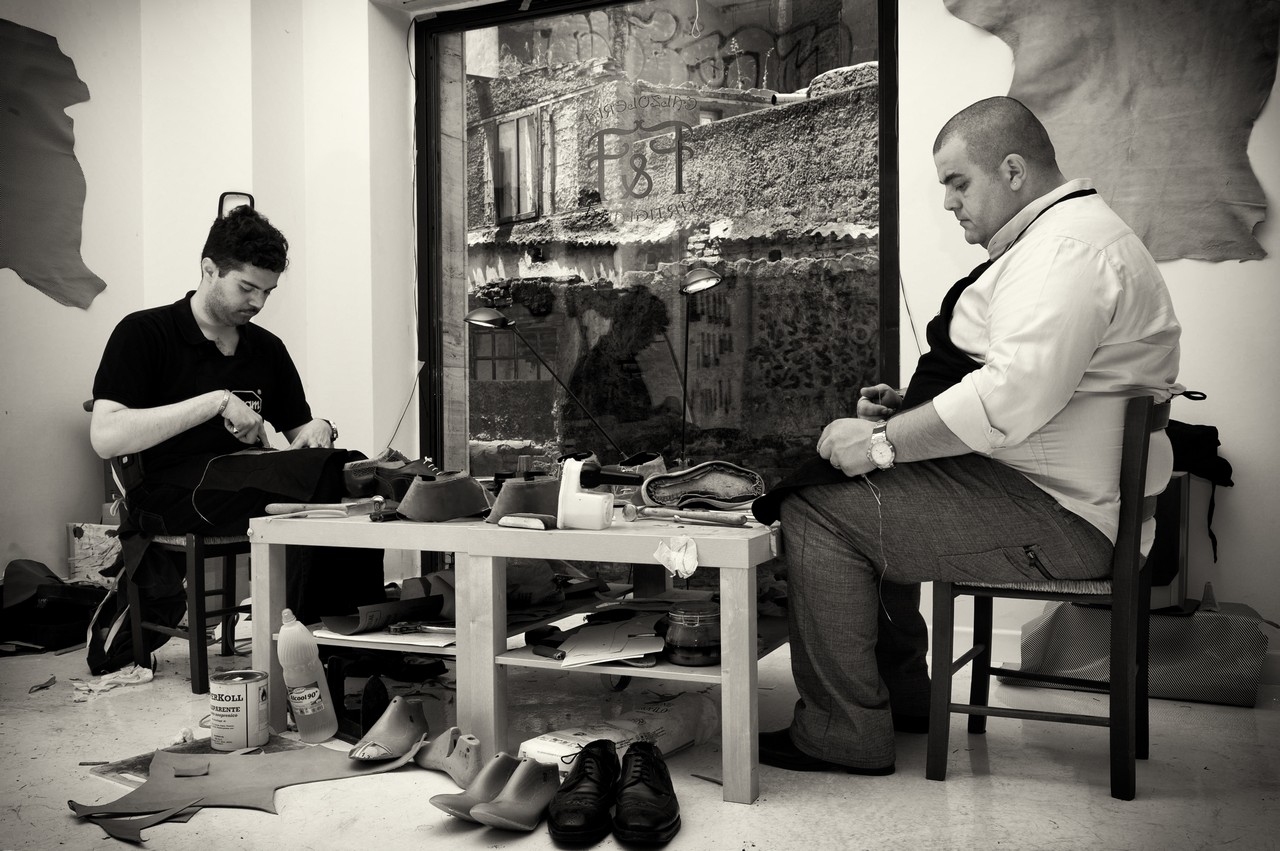 Ville: What other hobbies or passions do you have besides shoemaking?
Ville: What other hobbies or passions do you have besides shoemaking?
Francesco: I like listening to music, of all genres (I have an enormous CD collection) and I was an avid reader until my leisure time was considerably shrinked by my profession.
Florin: I’ve liked fishing since I was a young boy, and I’m trying to teach it to my business partner.
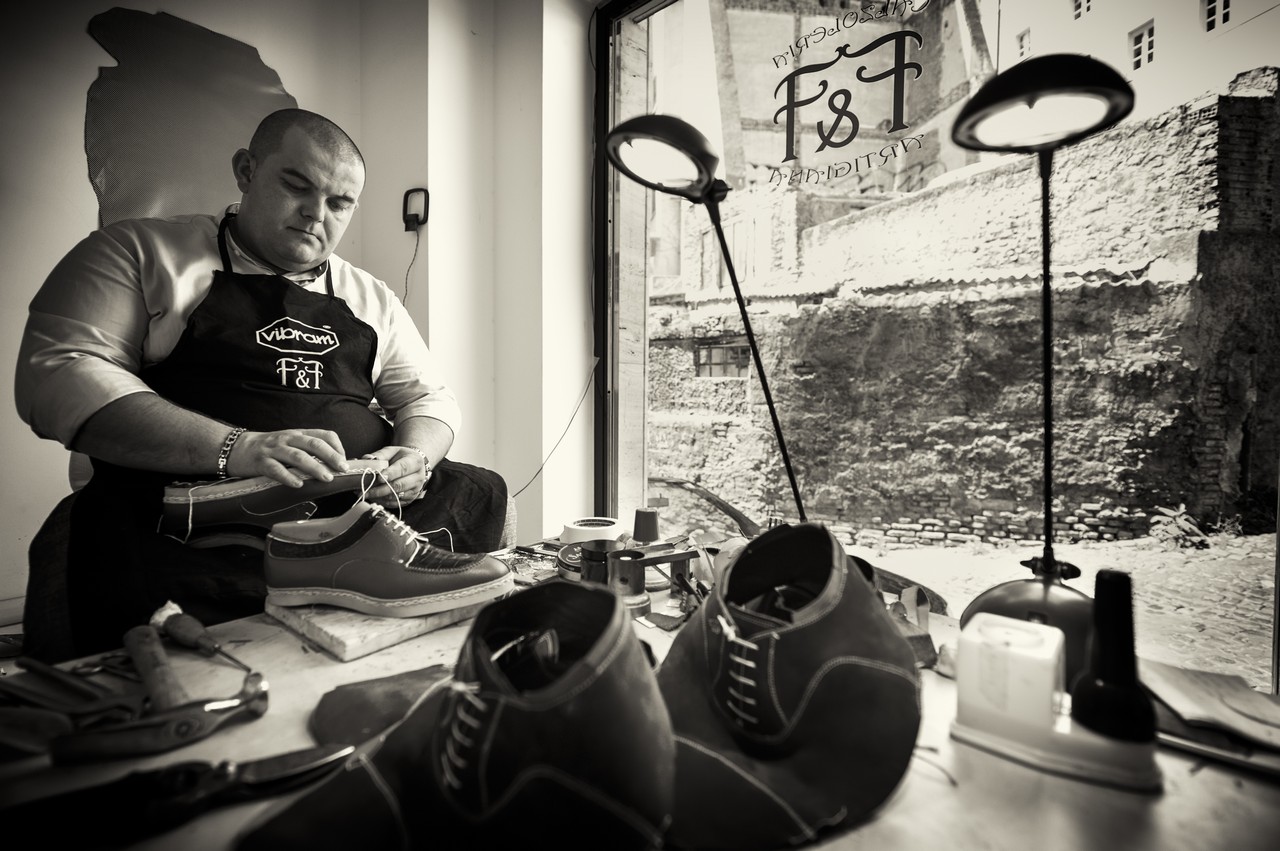 Ville: How did you first become interested in shoes, and when did you turn your eyes towards artisanal shoemaking? Why classics instead of fashion?
Ville: How did you first become interested in shoes, and when did you turn your eyes towards artisanal shoemaking? Why classics instead of fashion?
Francesco: I can say my interest came with my upbringing. Since I was a kid, I’ve never worn sneakers except when playing sports; I’ve always worn leather shoes and I’ve seen that, as I grew older, my favourite styles were all but disappearing. The oxfords and balmoral boots I bought when I was 15 were almost non-existant when I was 22. So, I decided to discover what I could find to save something I liked so much. Speaking of fashion, I think that the idea of jettisoning an entire wardrobe every year because it’s not “fashionable” is complete madness: good clothes and good shoes, if well made and well-designed, will be always look like beautiful objects.
Florin: My family owns a small tannery, where everything was made in the old ways. You could say that I lived and breathed leather since I was a little kid; so, when I had to decide what to do, my father casually suggested that I try to join a cordwainer school and learn how to make shoes in the traditional Eastern-European way. I passed the entrance exam and my voyage started from there. Classic design is the real benchmark of innovation: we will always have a rubber for erasing the old fashion, but also a pencil for creating new classics.
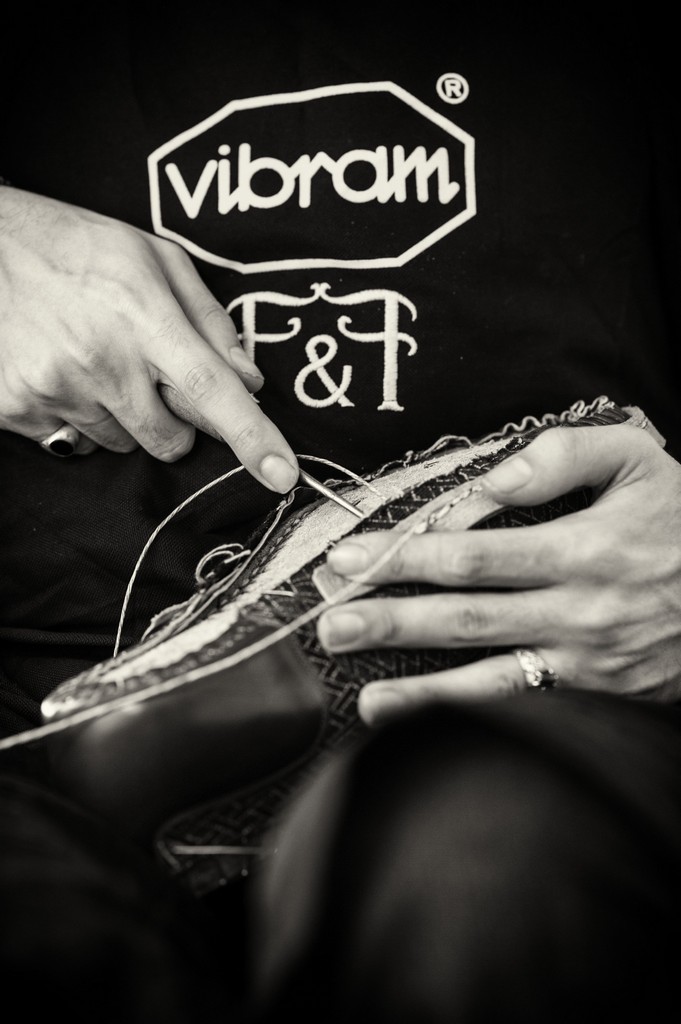 Ville: How have you gathered your knowledge of The Gentle Craft – from books, in-house training, workshops or somewhere else?
Ville: How have you gathered your knowledge of The Gentle Craft – from books, in-house training, workshops or somewhere else?
Francesco: My father always said that succesful knowledge starts from theory; so I began to acquire different shoemaking manuals, from the historical ones (thanks to the american site, The Crispin Colloquy) to modern books on patternmaking and style. In the meantime I started to practice the traditional methods of wax polishing. After I felt a bit more comfortable with the theoretical aspects, I started to search everywhere in Rome for the last masters of traditional shoemaking, hoping to acquire information on the field. I was quite lucky, since a lot of them were growing old and didn’t want to let their art disappear. After I felt sure enough I went to London, to polish my skills and to acquire even more knowledge on the hand-welting techniques. I learned at a really hectic pace, but all that practice was quite fun. When I felt ready, I found my business partner and decided to open a new shoemaking workshop in Rome.
Florin: I started by attending the cordwainer school in ClujNapoca when I was 16 years old. The course was four years long and started from the basics: the differences between leathers, then patternmaking, lastmaking, clicking, closing and all the techniques to build a shoe from start to finish. Probably my generation was the last to learn the traditional methods and techniques of Eastern Europe. The courses put a lot of emphasis on practice: the apprentices started their day with a bowl of bent nails and they had to straighten them again (by hammer and hand) before even touching leather. After I passed the final exams with flying colours I went to various workshops and factories to work; there I began to absorb international styles from different houses. That was the moment when I started to think about a last of my own design, that would incorporate all the styles with my personal touch. And the rest, as they always say, is history.
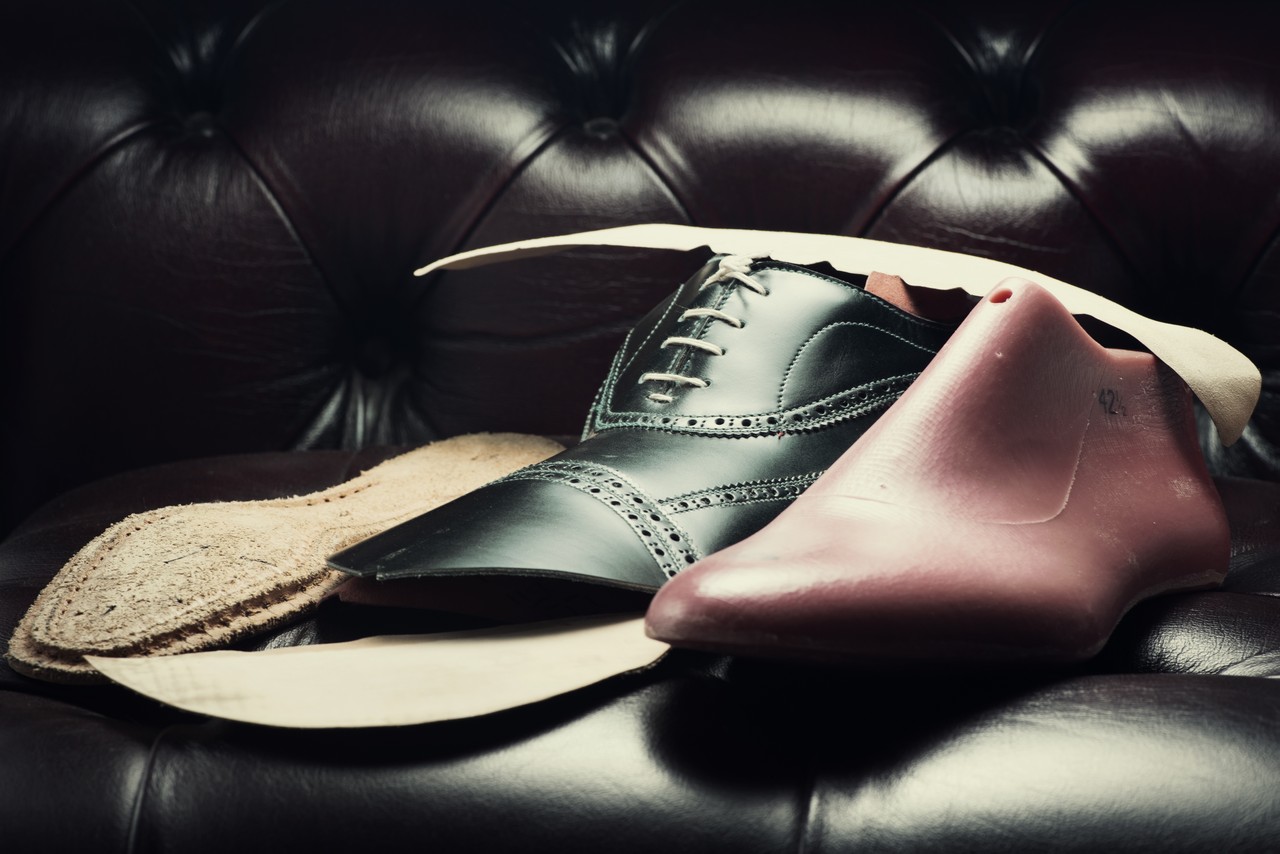 Ville: How would you describe your own dress? Have you any favourite clothes makers?
Ville: How would you describe your own dress? Have you any favourite clothes makers?
Francesco & Florin: Our style is actually quite similar. Modern artisans are often seen and
photographed with sartorial quality clothing, in an ethereal, surgically clean environment: but sincewe personally do all the work, we prefer a sportier style. In our lab we always wear jeans and shirts under the apron and we wear a pair of our own shoes. On weekends we gravitate to dressier combinations of jackets and pants.
We don’t like the modern Italianish style; since we were young, the narrow pants
and the tight, almost exploding jackets were stuff made for the nouveauriches of the roman outskirts. We prefer the traditional sartorial styles, with defined volumes and quality cloths. In the last years we’ve grew fond of vintage shops and markets, where you can find everything you like (with a bit of eye and a bit of luck).
Ville: Please tell us how your company F&F was born, and what goals you set for yourself in the beginning. How have you been received so far?
Francesco & Florin: We met eachother in the same italian laboratory, and after a while we
started thinking about the state of traditional Roman shoemaking. There was a distinctive air of tiredness, in all the old and retiring masters and in their shoes. We decided to become associates and open our own lab, before the old ways of shoemaking were forgotten, and from our initials F&F was born. Our objective was and remains quite simple: to build the best traditional shoes, with the best materials and the best techniques, with our four hands and our tools. The response has been positive: all our clients return every now and then, for new shoes and professional shine. Some have even become friends.
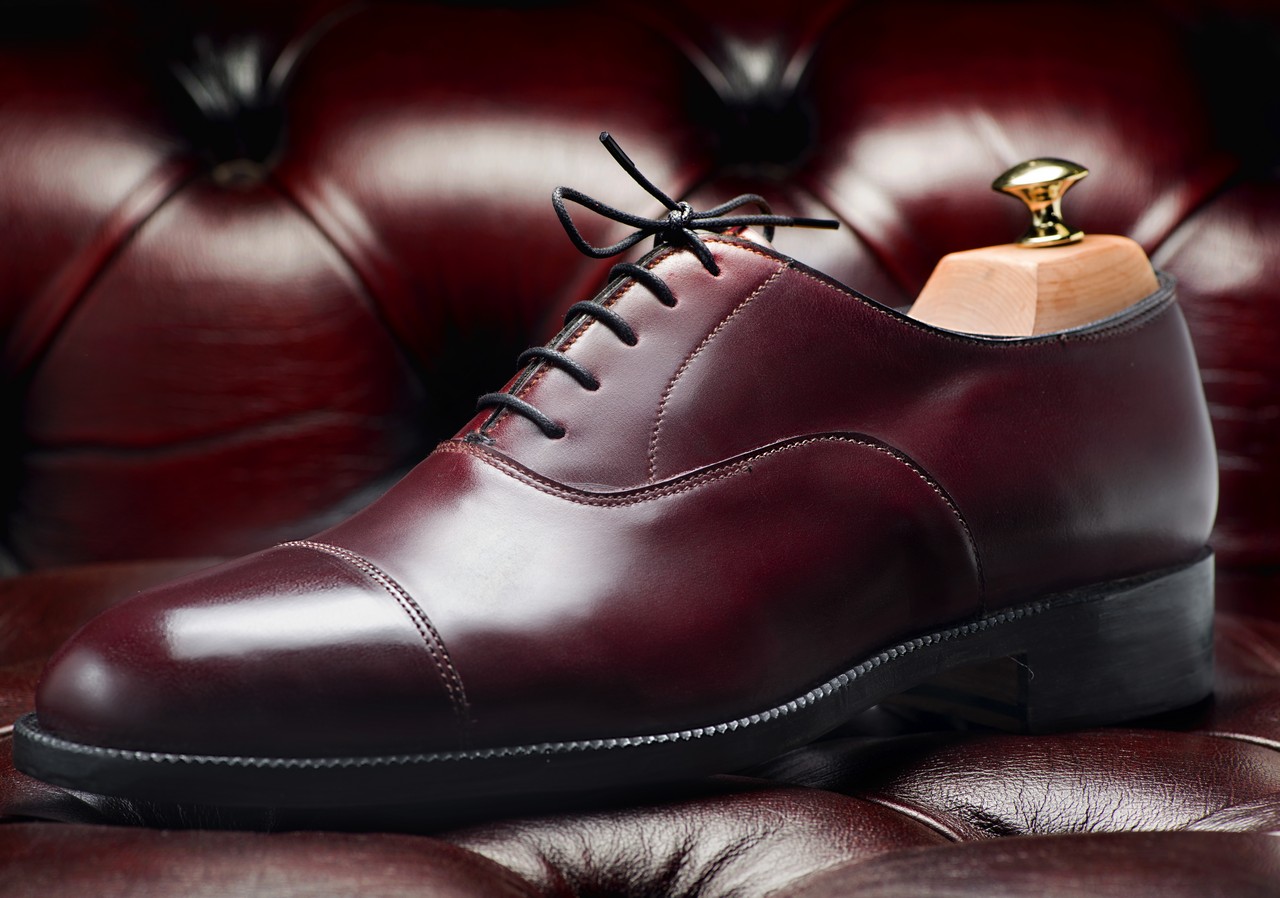
Ville: How would you describe the house style of the shoes you make?
Francesco & Florin: We try to follow the guidelines of the old Roman style as it was made famous in the 1940s and ’50s by masters Gatto and Laudadio. It’s a conservative style, based on robust, masculine last that needed only a bit of flair to come to the 21st century combination of understatement and perfect finishing details, with a little bit of modern touches (smaller heels, fiddleback waists). Again, we try to avoid the flash of the Italianish industrial style, with their long, narrow, goofylike lasts.
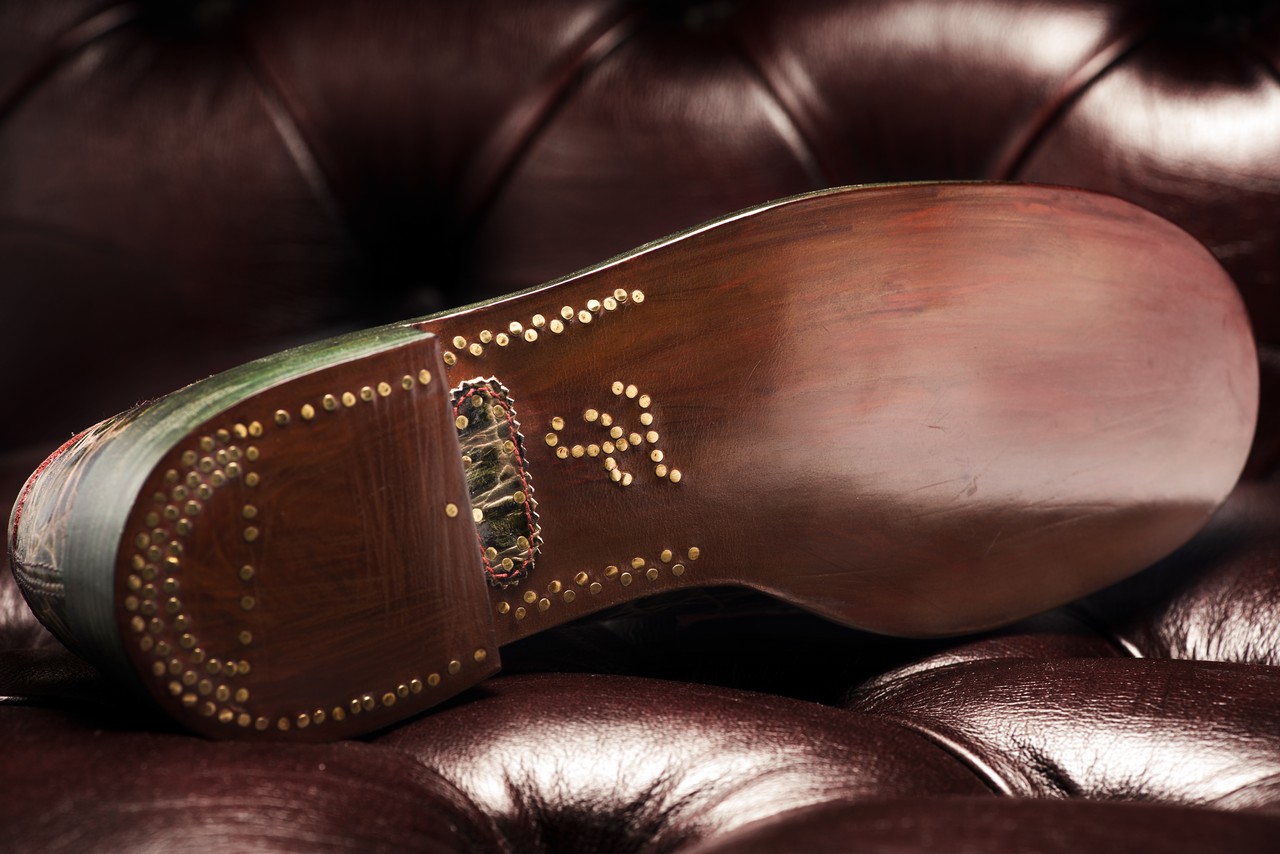 Ville: Do you have a favourite shoe model (eg. monk, derby, oxford, balmoral boot) and leather type?
Ville: Do you have a favourite shoe model (eg. monk, derby, oxford, balmoral boot) and leather type?
Francesco: I have a burning passion for the different combinations of colors and materials;
therefore I love the models that lend themselves to be realized in this way. The old balmoral
oxford, for example, can become unique if you realize it in leather and cloth, or in two different leathers, or in the same leather with different colour melanges. For example, the last shoe I made for myself is a combination of hand painted calf and lizard.
I don’t have a single favourite leather, since I think that every shoe model is naturally inclined to be made with its perfect leather. An officer derby, made with a light, feminine suede, looks out of place; likewise, a classic Roman loafer, with its tight lines and soft chiseled toe, becomes clownish if you make it in cordovan…
Florin: My absolute favourite is the rarest of all, the seamless wholecut shoe. When I was at school it was considered the hardest shoe to make; if you think about it, it’s the perfect marriage of craft and design. You start from a flat piece of leather and you have to mold it into a three-dimensional, beautiful shape, without any external help. No lines, no pattern, only hand-eye coordination and experience. Regarding leathers, I’ve always loved box calf; today it’s seen as dull, even boring, but a really good box calf can acquire the same nuances of the modern, softest aniline calf. The key resides in the added bonus of superior resistance.
 Ville: There are dozens of cordwainers in Italy alone – why should my readers visit you?
Ville: There are dozens of cordwainers in Italy alone – why should my readers visit you?
Francesco: About ten years ago, the Neapolitan gentleman Giancarlo Maresca wrote a few
prophetic lines about the future of the artisanal crafts: he said that the new generation of young artisans would trade some of their ability for a new style of customer relationship, given that their future clients would not understand the full implications of some lost styles and techniques anymore. As I see it now, time has shown Mr. Maresca’s conclusions to be true. This kind of approach, unfortunately, hides the fact that the client doesn’t understand why you’re changing the old ways, he feels that something is not as it’s supposed to be. When we opened, we decided to follow the traditional ways and techniques because they’re the best ones to accomodate the clients’ requests, not simply to appeal to the “vintage for the sake of it” crowd.
For example, a lot of clients come and lament about the lack of arch support in their mass
produced shoes. When they try our models, they find them more comfortable and supportive: usually they don’t know and don’t care about handskived leather counters, leather insoles and their clear advantage over carboard insoles and synthetic counters, but they feel the superiority of our work.
Florin: The best traditional labs were created and maintained by a single artisan, maybe with a few apprentices. If the same hand follows all the building phases, the possibility of mishaps and incomprensions is reduced to almost nothing, and every error can be corrected with the right solution. Our lab is among the few ones in Italy which can realize a pair of shoes from start to finish in-house: there are no external clickers or closers, no other hand touches our work. The client is followed in every step (no pun intended) by the same guys who took his measures and drew his pattern, so he can trust that no problems will arise because of some external worker error.
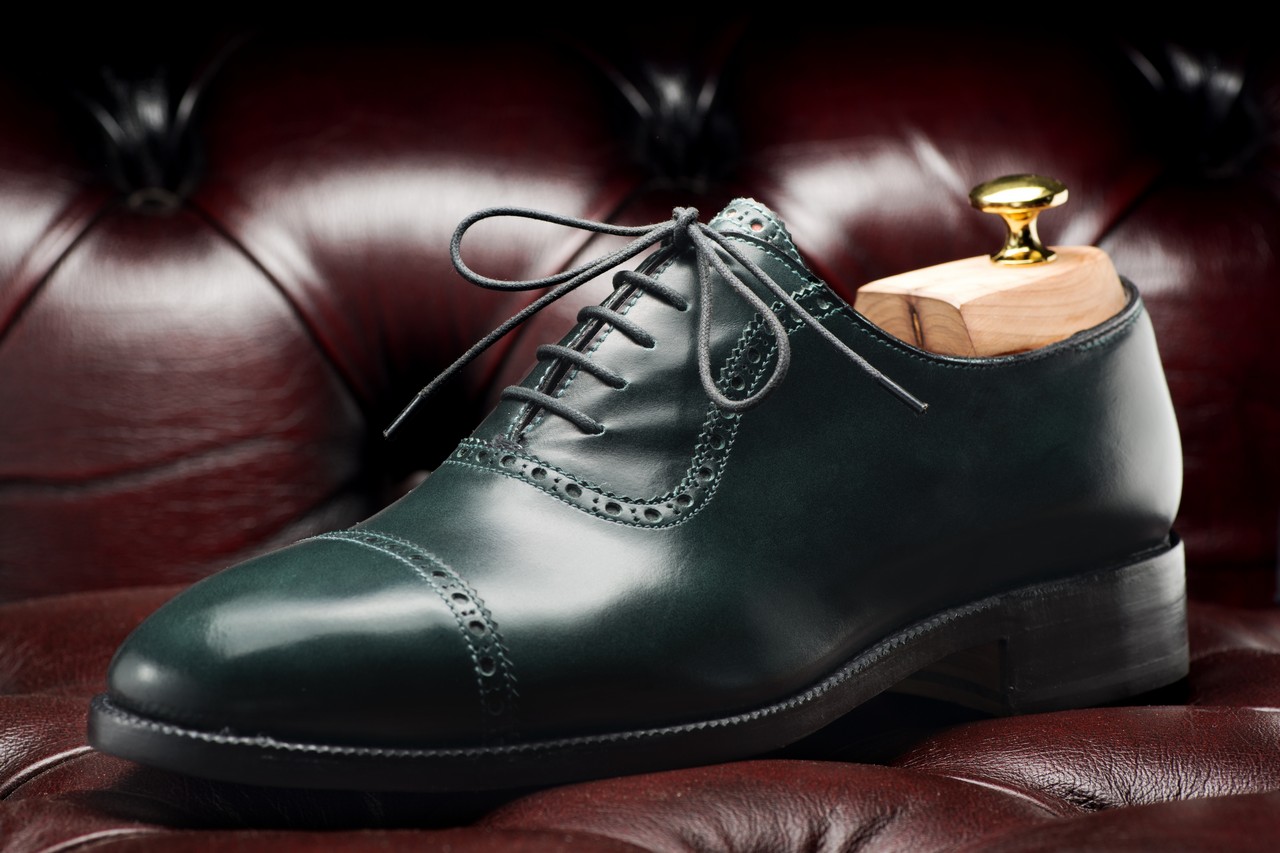 Ville: What is your definition of a good shoe?
Ville: What is your definition of a good shoe?
Francesco & Florin: this is quite a difficult question. The simplest way to answer would be “the most comfortable for the foot that will wear it”, but it’s too simplicistic for a response. The shoe cannot be reduced to a “glove for the foot”, exactly like a good suit is not just a tool to protect yourself from weather conditions. A gentleman wears his shoes with the feeling that he’s showing the foundations of his being, the element that sets apart his person from the rest and, at the same time, strengthens his gait and forms a synthesises of the taste needed in a life of walking. Henceforth, the good shoe is the most comfortable, with a distinctive (but never flashy) style, and the one which will pleasantly grow old with its owner.
 Ville: Who or what inspires you?
Ville: Who or what inspires you?
Francesco & Florin: It’s quite easy to find inspiration, when you live in the city of Rome. All you need is a sunny day, and a walk between the old monuments and the villas can fill you with enough sensations and views to build an entire collection.
Ville: Is there something you wish more men would know about the current state of shoemaking in Italy? This is a useful chance to share the lore and have a lasting effect on my readers.
Francesco: From an external point of view, Italy still looks like the artisanal paradise that it was in the last century: we still have some of the best shoemakers in the world, but the real world looks a bit different from what you can read about in fashion magazines and blogs. There are no more than a few dozens of artisanal shoemakers left, and despite a renewed popularity in the traditional crafts, their number is not increasing. Shoemaking can be very pleasant and satisfactory, but it remains a hard, physical work; the majority of fashion school students don’t want to get their hands dirty, so the few who like this craft try to become stylists, maybe patternmakers, but they don’t even think about building their designs with their own hands. We are trying to build some more interest for the gentle art: in fact, we’ve done a small documentary, in which we share our views of our craft, with a private foundation, which will deliver it to the schools here in Rome.
Florin: The real problem is that it’s becoming more and more difficult to learn the craft. Most of the old masters don’t want to share their knowledge, and the few school courses are oriented to an industrial style teaching method: it’s still possible to learn patternmaking, but handlasting and welting techniques are being slowly forgotten. If you remove the Florentine masters and their apprenticeships from the equation, you’ll discover that almost all the actual italian shoemakers come from shoemaking families, or learned the craft abroad or from manuals and practice. In fact we are thinking about offering shoemaking courses as soon as we can organize them well.
Photos: Stefano Mazzoni
Category Cordwainers, Interviews | Tags:

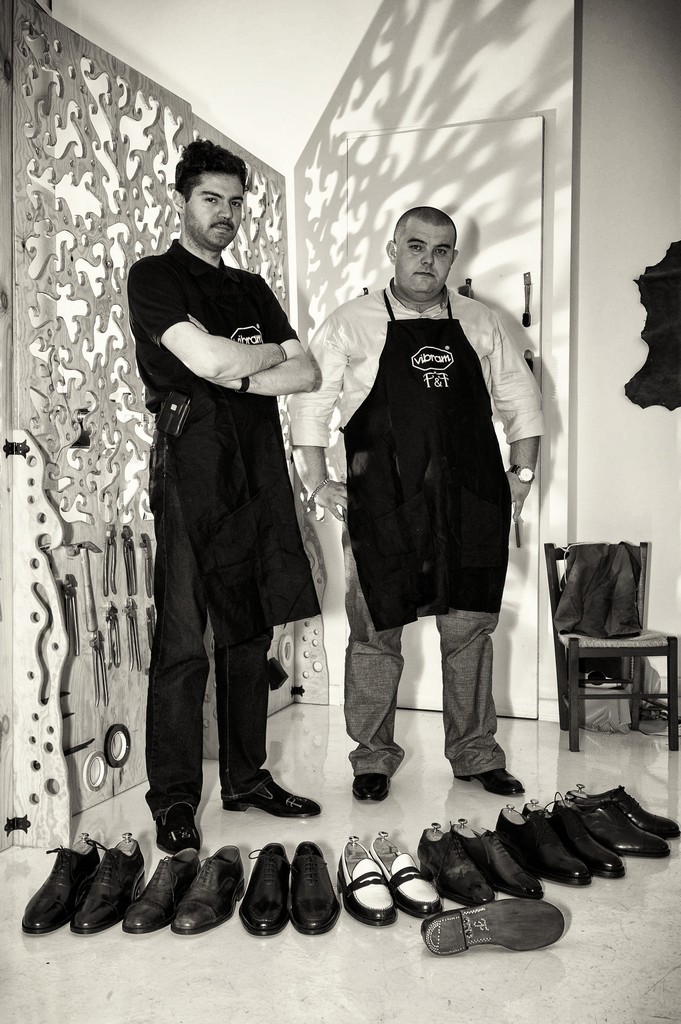

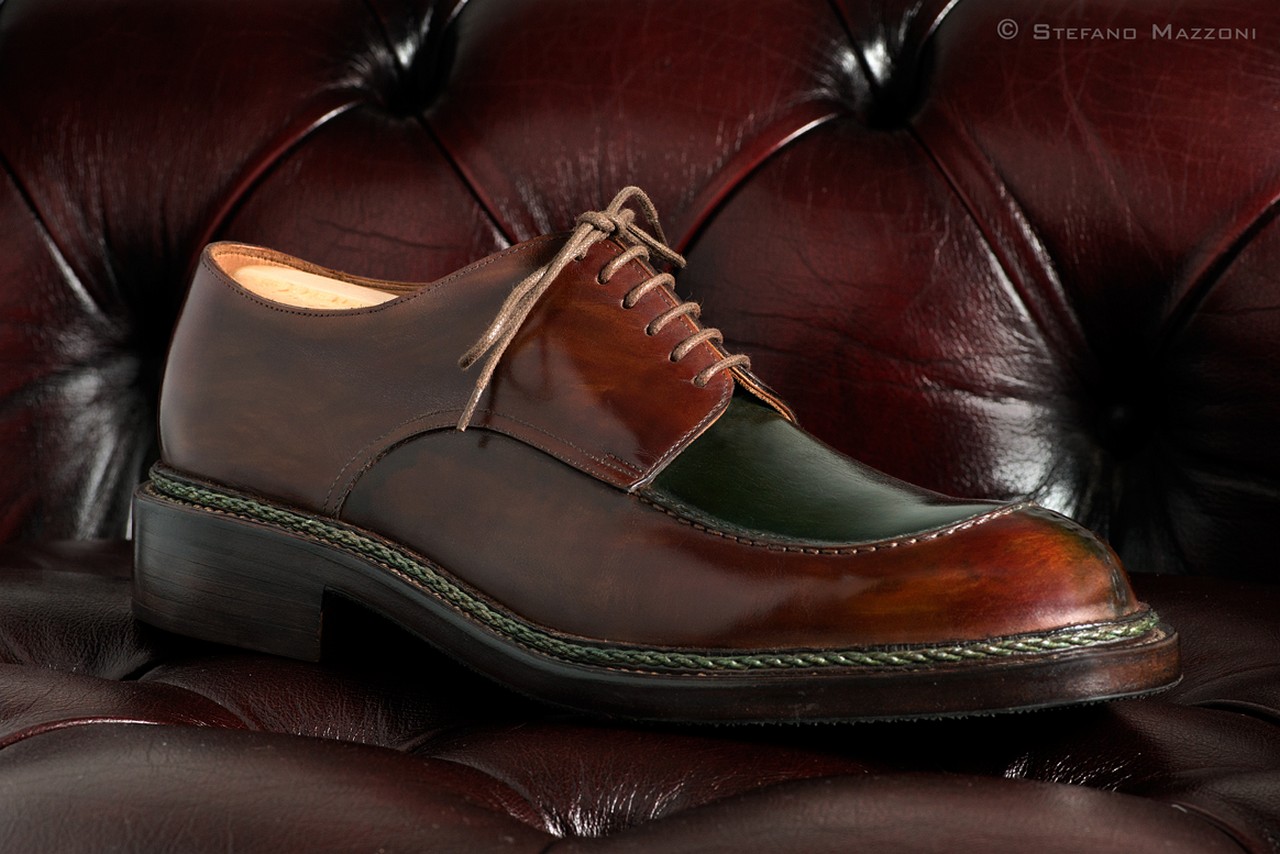


Bellísimos! Por favor compartan su teléfono y correo electrónico.